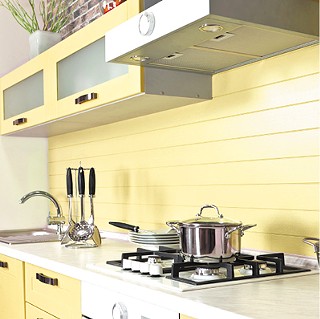The kitchen is the heart of a modern home — but a growing body of research shows that, despite our contemporary appliances, it also remain a major source of indoor air pollution.
Air quality in a significant number of homes with gas stoves wouldn't meet outdoor pollution standards, researchers at the Lawrence Berkeley National Laboratory found this year. The Southern California lab is a hub for studying indoor air quality and the ways it contributes to long-term health respiratory and cardiovascular risks.
"Your home is really your fishbowl," scientist Jennifer Logue explains in a new Q&A video series to answer consumer questions. "It's where you live, it's where you breathe, it's where you're exposed."
Not only did the team find hazardous levels of nitrogen dioxide and carbon monoxide in typical kitchens, they also put a variety of range hoods to the test and found that most aren't very effective at whisking those pollutants out of the house — and that's if people even remember to turn them on. Gas burners release the most chemicals, but electric burners and toasters also produce fine particles that can enter the lungs.
Now they're working on a rating system that will tell consumers which range hoods are most effective, and a goal down the line would be seeing quieter range hoods that turn on automatically when meals are being prepared.
Berkeley Lab tips for reducing kitchen air pollution:
Always turn on the range hood when cooking or baking.
Make sure your range hood filters to the outdoors, not circulating within your home.
Cook on your back burners if your range hood does not cover the entire surface.
Look for range hoods that move at least 200 cubic feet of air per minute.
If it's not possible to install a range hood in your kitchen, opening windows is better than nothing.
















